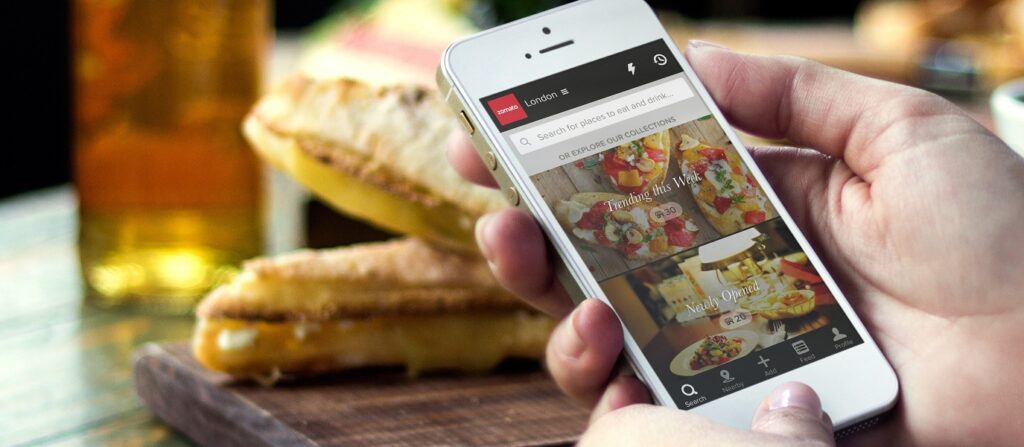Ordering food over the Internet is nothing new or revolutionary, but it is in recent years that the industry has begun to explode. By 2020, this business niche was already valued at $32 billion, so mobile food delivery apps and the specifics of their development are increasingly becoming the discussion subject among entrepreneurs.
If you are also planning to create such a product, but don’t know where to start, our quick guide will help you to understand the main aspects.
Why are mobile delivery apps effective?
A mobile food delivery app can contribute to the serious growth of a company that owns a chain of restaurants or other catering establishments. This is due to several reasons:
- Acquiring of new clients. Since the share of mobile web users has long surpassed the desktop platform, the app allows companies to reach a large audience and successfully entice new customers.
- Increased loyalty. The faster and more convenient ordering food methods a restaurant, café, or any public catering has, the more loyalty customers show to its brand.
- Faster return on investment. Implementing new technologies, the company gains more customers and a simpler ordering system, which ultimately helps to increase profits and improve the ROI of the business.
How a food delivery app works
The food ordering app can be implemented in 3 formats, each of which has some features and advantages:
- Aggregators of restaurants. Here, companies are only responsible for placing and managing orders from restaurants that are listed in their catalog. They charge businesses a 10-30% fee for every order processed. The main disadvantage of such services is that the threshold for entering this niche is quite low, which means that the competition is fiercer. The plus is that with such a business model, you don’t have to worry about cooking and food delivery.
- Orders and delivery services. The strategy of monetizing such apps involves charging restaurants 25-30% commission of the orders processed for them. There is also a fee for delivery, which can be either fixed or based on the distance from the restaurant to the client. The minus of this model is that the company needs to hire and train couriers, which complicates business management and can prevent it from scaling.
- Branded app. In this case, the company relies only on its brand and creates an app that fully matches its visual style. This approach increases the awareness of the restaurant and engages customers, which positively affects the average check and the total number of orders.
Key Features of Food Ordering Apps
When creating such a service, it is important to take into account the needs of not only customers but also the courier service. Here are the features each of these versions of the app should include:

To manage the service, you also need a separate version with a different set of functions. The administrator must have access to customer and courier profiles, the ability to change the content of the app, process orders, and track the receipt of payments.
The main stages of developing a food delivery app
Developing a mobile food delivery app is a very laborious process that includes 5 basic steps.
1. Market research
To outperform the competition, you need to stay on top of all the hottest food delivery industry trends. Whenever possible, the app should have the functions of ordering dishes through social networks, a virtual assistant, or a smartwatch, as this greatly simplifies the life of customers.
2. Choosing a business model
After analyzing a niche for interesting trends, you need to decide on a business model. Check out the key features of the aggregators, ordering/delivery services, and branded apps, then pick the format you can grow faster.
3. Study the target market
To create a cool food delivery app, you need to know your customers and target audience as best you can. This is the only way you can identify the main users’ “pain points” and design your service in such a way that it helps them in solving these problems and meets their needs.
4. Product functionality
The functionality of the app depends on your preferred business model. If we are talking about a standard restaurant aggregator, it is important to create a high-quality interface for clients and the administrator. And if a courier is also added to the “equation”, you need to deal with the functionality of his version of the service as well.
5. Choice of technologies for implementation
For the app to work properly, it is necessary to choose the optimal technologies that would allow you to implement several key features. These are APIs for cataloging restaurants, payment gateways, geolocation features, push notifications, and more.
How much would it cost to develop such an application?
The cost of such a mobile app is dictated by many factors, including the number of platforms, integrations, and more. To get a full picture of project costs, customers need to decide on the required set of service functions. The designers then think over its UX/UI design and create visual prototypes. Only after that our team will be able to understand how long it will take to implement all solutions and predict the cost of the product.
Conclusion
With the growing popularity of online food ordering around the world, mobile delivery apps are a promising niche for investment. To stand out from the competition in this industry, you need to follow technological trends. Besides that, your company doesn’t have to invest a lot of money into developing the app. At first, you can simply rely on a “minimum viable product” (MVP), track the reaction of the target audience, and only after that add a full set of functions to the app.
By the way with all the mobile apps advantages for business you can read our updated article!




